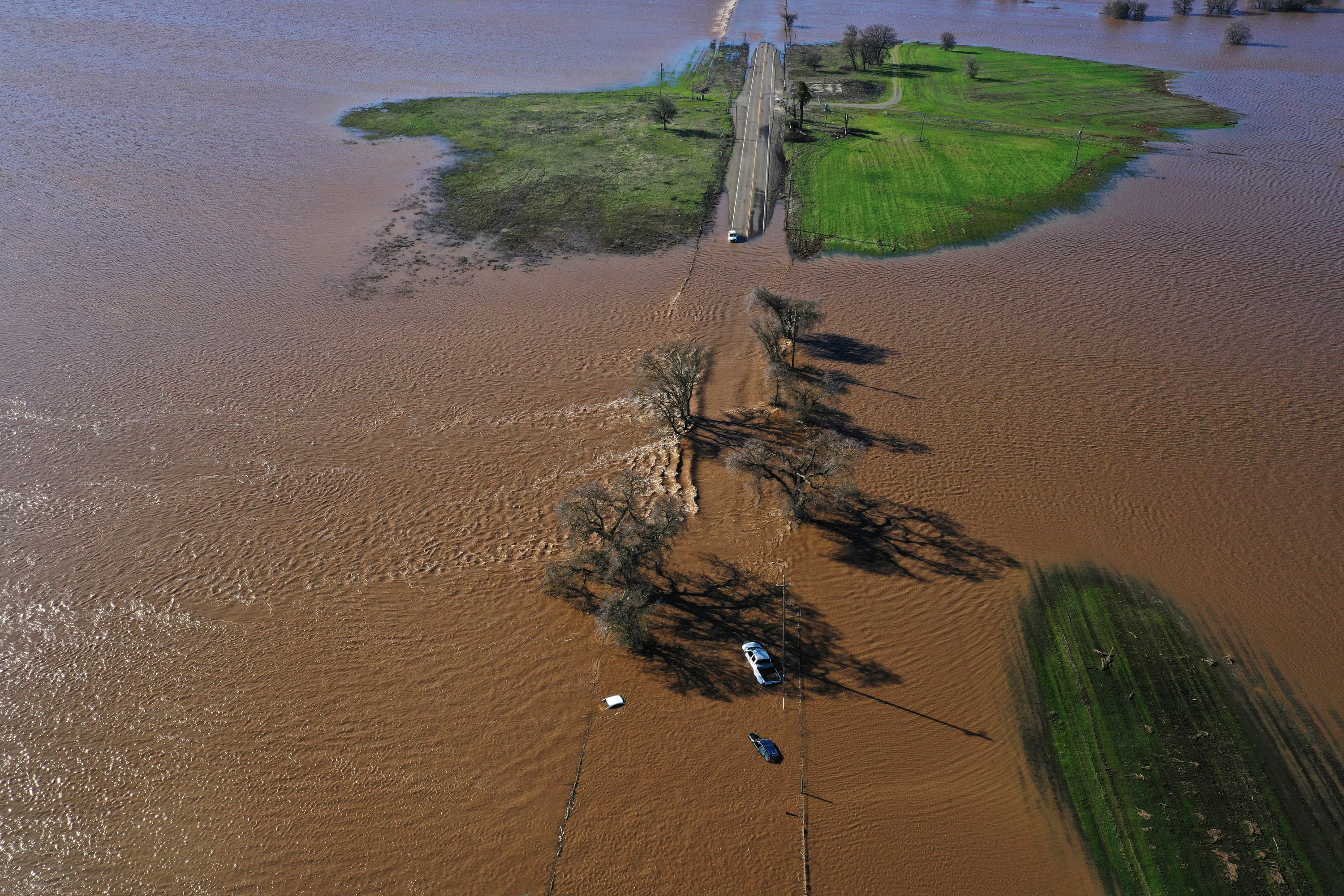
Atmospheric rivers have been in the headlines lately with widespread flooding in northern California but what exactly is an atmospheric river?
In the Northern Hemisphere, atmospheric rivers typically occur during the winter. They cause the most extreme rain, snow and flooding when they are associated with systems that slow or stall.
Atmospheric rivers are the largest transport mechanisms of freshwater on Earth, according to NASA.
What is an atmospheric river?
Sometimes called "rivers in the sky," atmospheric rivers are a major factor in extreme rain and snowfall in the West.
Long, narrow corridors of air heavy with moisture form when warmer air from the tropics (lower latitudes) moves toward the poles ahead of powerful storm fronts.
Atmospheric rivers function much like rivers on the surface but can carry even more water than the mighty Mississippi River. The water can travel for thousands of miles.
They’re responsible for more than 90% of the water vapor transported to the mid latitudes from the tropics, according to a blog Kai-Chih Tseng wrote for the National Oceanic and Atmospheric Administration.
Atmospheric rivers occur around the world but occur most often along storm tracks near jet streams, Tseng wrote.
When studying atmospheric rivers, scientists look at systems more than 1,000 miles long, less than 620 miles wide and an average of 1.8 miles in depth. Studies show they typically last around 20 hours in an area over the coast.
What is the Pineapple Express?
In the West, atmospheric rivers approach from the Pacific Ocean, where they’ve collected tremendous amounts of water. They're sometimes called the "Pineapple express" because they originate in the region around Hawaii.
They occur most often when the El Niño pattern is present in the Pacific.
Will the rain have an impact on California's drought?
Recent rainfall is likely to alleviate the short-term drought in northern California along the coast but will do little in terms of bringing drought relief to the West as a whole.
But atmospheric rivers are a major driver of precipitation. One study found these “rivers in the sky” are responsible for up to 65% of the extreme rain and snow events in the region. On average, up to 50% of the annual precipitation on the West Coast comes from atmospheric river events.
In 2016 and 2017, California shifted abruptly from a four-year drought to extreme wet after a series of intense atmospheric rivers. It flipped back to dry in 2018, then wet in 2019 then into extreme drought in 2021, said Daniel McEvoy, assistant research professor at the Desert Research Institute at the Western Regional Climate Center.
Though beneficial for water supplies, such events can wreak havoc on travel, bring deadly mudslides and cause catastrophic damage to life and property, NOAA said.
Studies show that climate change will make atmospheric rivers warmer, more intense and more frequent.

Contributing: Elizabeth Weise and Doyle Rice, USA TODAY